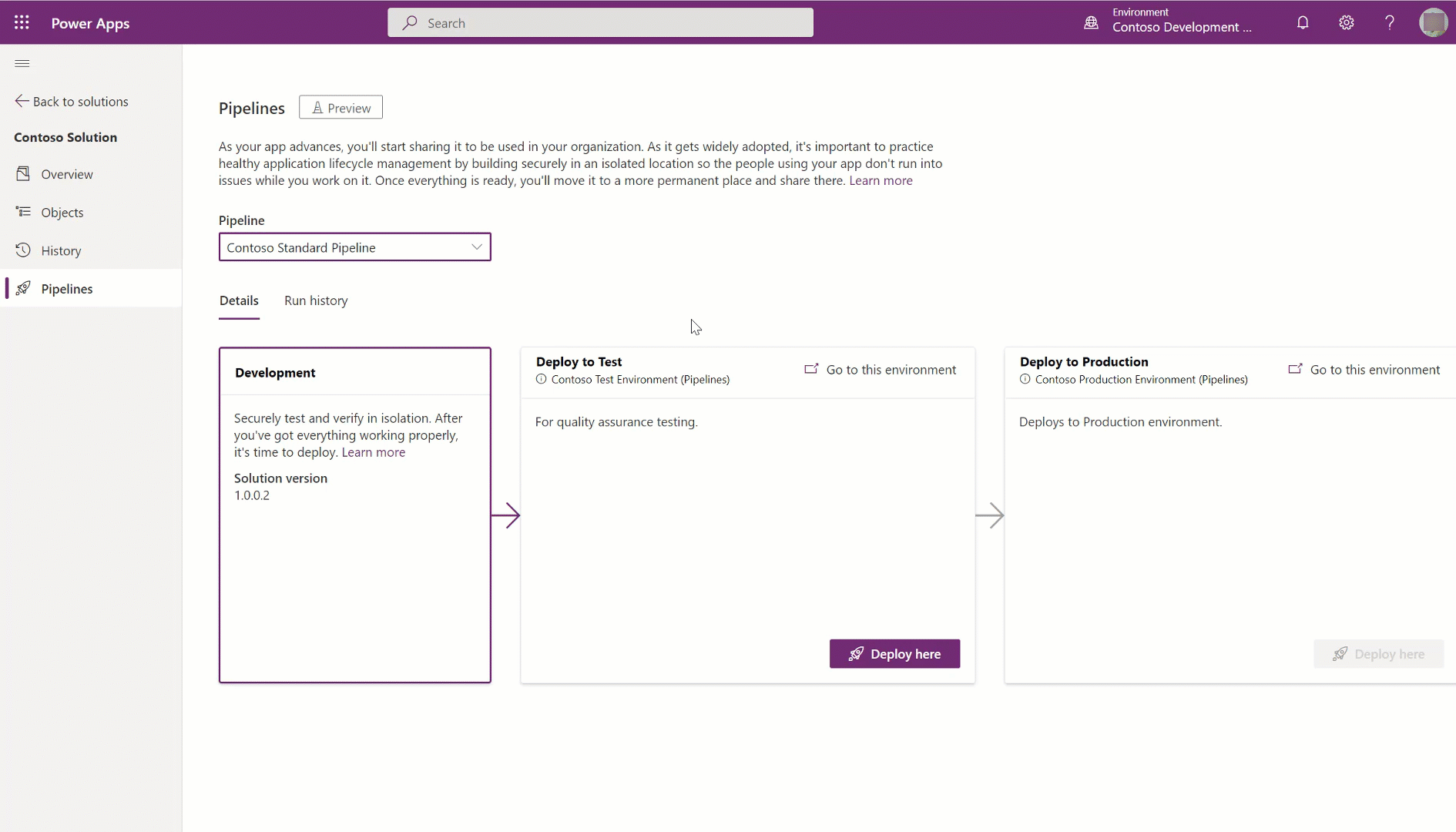
Pipelines in Power Platform is Generally Available (GA)
We are pleased to announce that pipelines within Power Platform is generally available. Pipelines aims to democratize application lifecycle management (ALM) for Power Platform and Dynamics 365 customers by bringing deployment automation capabilities into Managed Environments in a manner that’s more approachable for all makers, admins, and developers.

It only takes a few minutes to configure pipelines and share with makers. Pipelines are then run directly within development environments or PAC CLI. An intuitive in-product experience guides the deployment process and educates citizen developers about healthy ALM practices. This is easy to understand with automatic safeguards applied and complexities abstracted by the system. For example, connections, environment variables, and deployment pre-validations are built into the experience, ensuring citizen devs and the applications deployed are more successful.
You might have noticed we’re announcing GA sooner than initially anticipated. Why is that?
Customer adoption and feedback during preview have been overwhelmingly positive with many customers expressing desire to use pipelines in production (which is typically inadvisable for preview features). We’ve shipped many updates during the preview to improve overall quality, reliability, and ensure backward compatibility for upcoming releases. Numerous signals we monitor provide high confidence in Microsoft’s ability to support your production workloads at any scale.
Rest assured; there’s no shortage of new pipelines features and experience improvements in the works. Our roadmap remains intact, and we’re committed to supporting larger scale projects that often necessitate more advanced ALM functionality. I’d like to share what the team is currently developing and will be made available shortly. This is not an exhaustive list of what’s coming. The below GIFs were recorded from actual working demos and edited for length.
Schedule deployments (coming soon)
Often, customers wish to deploy updates during non-business hours. It minimizes risks of impacting end users during their workday and resulting business impact. Automation ensures you can ship smaller, more frequent, updates on a scheduled basis. It also avoids the team working weekends to attend deployments. In fact, at Microsoft we use similar techniques to release Power Platform updates and soon customers can achieve the same.

But that’s not the only reason we needed scheduling functionality. The ability to capture a deployment request without immediately deploying is a prerequisite for much more.
Pipelines extensibility (coming soon)
Soon you’ll be able to run custom logic both before and after a deployment executes. Using Power Automate cloud flows, the possibilities are rather endless. There are over 900 built-in connectors as well as the ability to develop custom connectors.
Configuring a pre-step condition on a deployment stage ensures the deployment request to the target environment is pending until the deployment is approved. The system then carries out the automated deployment. Similarly, you could incorporate automation running within other systems. For example, committing solutions to a source code repository or running automated tests. With Power Platform handling the heavy lifting, these hybrid approaches enable advanced functionality at a fraction of the setup and maintenance costs when compared to running DevOps tools standalone. Perhaps most importantly, the maker friendly in-product experience doesn’t expose background complexities.

Configuring a post-step condition on a deployment stage can also be leveraged for running advanced post-deployment logic, or simple automations such as notifying a maker when their deployment succeeds.
Delegated deployments (coming soon)
What about preventing makers from customizing directly in production? Today, some customers use service principals within Azure DevOps and GitHub to deploy solutions. This way, only the service principal is required to have customization permissions in prod (required to import solutions). Not makers. However, it can become quite cumbersome to setup and manage. Soon, these use cases will be supported within pipelines in Power Platform. Note this will become available after scheduling and extensibility.
Managed environments
Pipelines requires access to one or more Managed Environments. While the date for pipelines GA has changed, the timeline for enforcing use of Managed Environments in pipelines hasn’t. We intend to add these enforcements in the second half of 2023 to help admins stay compliant. Developer environments can now be enabled as Managed Environments and used in pipelines for development and QA through the Power Apps Developer Plan license. It’s a good time to start planning your environment strategy if you haven’t done so already.
Learn more about pipelines
- Pipelines overview Microsoft docs
- Set up pipelines. Microsoft docs
- Run a pipeline. Microsoft docs
Videos:
- New! How to do ALM with Power Platform. Video comparing what’s available in Azure DevOps, GitHub, and pipelines in Power Platform with Casey Burke and Kartik Kanakasabesan
- Microsoft Mechanics. Video on Managed environments and pipelines with host Jeremy Chapman and Power Apps GPM Evan Lew
- Power CAT Live. Video on pipelines with host Phil Topness, and PM’s Casey Burke and Kartik Kanakasabesan
We’re grateful for the overwhelming support and customer feedback received during the preview. Please do keep it coming! You can comment below and in the Power Apps community.
